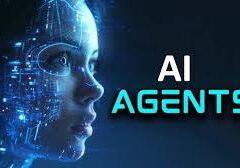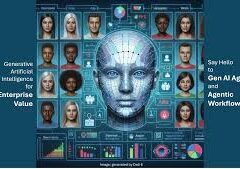The Open-Source Agent Framework Landscape: Beyond CrewAI & AutoGen
The AI agent ecosystem has exploded with new frameworks—each offering unique approaches to building autonomous systems. While CrewAI and AutoGen dominate discussions, alternatives like LangGraph, Agno, SmolAgents, Mastra, PydanticAI, and Atomic Agents are gaining traction.
Here’s a breakdown of how they compare, their design philosophies, and which might be right for your use case.
What Do Agent Frameworks Actually Do?
Agentic AI frameworks help structure LLM workflows by handling:
✅ Prompt engineering (formatting inputs/outputs)
✅ Tool routing (API calls, RAG, function execution)
✅ State management (short-term memory)
✅ Multi-agent orchestration (collaboration & hierarchies)
At their core, they abstract away the manual work of:
- Structuring system prompts
- Parsing LLM responses
- Managing tool execution
- Debugging failures
But too much abstraction can backfire—some developers end up rewriting parts of frameworks (like LangGraph’s create_react_agent) for finer control.
The Frameworks Compared
1. The Big Players: CrewAI & AutoGen
| Framework | Best For | Key Differentiator |
|---|---|---|
| CrewAI | Quick prototyping | High abstraction, hides low-level details |
| AutoGen | Research/testing | Asynchronous, agent-driven collaboration |
CrewAI lets you spin up agents fast but can be opaque when debugging. AutoGen excels in freeform agent teamwork but may lack structure for production use.
2. The Rising Stars
| Framework | Philosophy | Strengths | Weaknesses |
|---|---|---|---|
| LangGraph | Graph-based workflows | Fine-grained control, scalable multi-agent | Steep learning curve |
| Agno (ex-Phi-Data) | Developer experience | Clean docs, plug-and-play | Newer, fewer examples |
| SmolAgents | Minimalist | Code-based routing, Hugging Face integration | Limited scalability |
| Mastra (JS) | Frontend-friendly | Built for web devs | Less backend flexibility |
| PydanticAI | Type-safe control | Predictable outputs, easy debugging | Manual orchestration |
| Atomic Agents | Lego-like modularity | Explicit control, no black boxes | More coding required |
Key Differences in Approach
1. Abstraction Level
- High (Easy Start): CrewAI, Agno, Mastra
- Medium (Balanced): LangGraph, AutoGen
- Low (Full Control): PydanticAI, Atomic Agents, SmolAgents
2. Agency vs. Control
- High Agency (LLM decides): AutoGen, SmolAgents
- Structured Control (Dev guides): LangGraph, PydanticAI, Atomic Agents
3. Multi-Agent Support
- Best for Complex Teams: LangGraph (graph-based), Agno (hierarchical)
- Manual Chaining Needed: PydanticAI, Atomic Agents
What’s Missing?
Not all frameworks handle:
🔹 Multimodality (images/audio)
🔹 Long-term memory (beyond session state)
🔹 Enterprise scalability (LangGraph leads here)
Which One Should You Choose?
| Use Case | Recommended Framework |
|---|---|
| Quick prototyping | CrewAI, Agno |
| Research/experiments | AutoGen, SmolAgents |
| Production multi-agent | LangGraph, PydanticAI |
| Strict control & debugging | Atomic Agents, PydanticAI |
| Frontend integration | Mastra |
For beginners: Start with Agno or CrewAI.
For engineers: LangGraph or PydanticAI offer the most flexibility.
Final Thoughts
The “best” framework depends on your needs:
- Speed vs. control
- Multi-agent complexity
- Debugging transparency
While some argue these frameworks overcomplicate what SDKs already do, they’re invaluable for scaling agent systems. The space is evolving fast—expect more consolidation and innovation ahead.
Try a few, see what clicks, and build something awesome!
l
🔔🔔 Follow us on LinkedIn 🔔🔔













